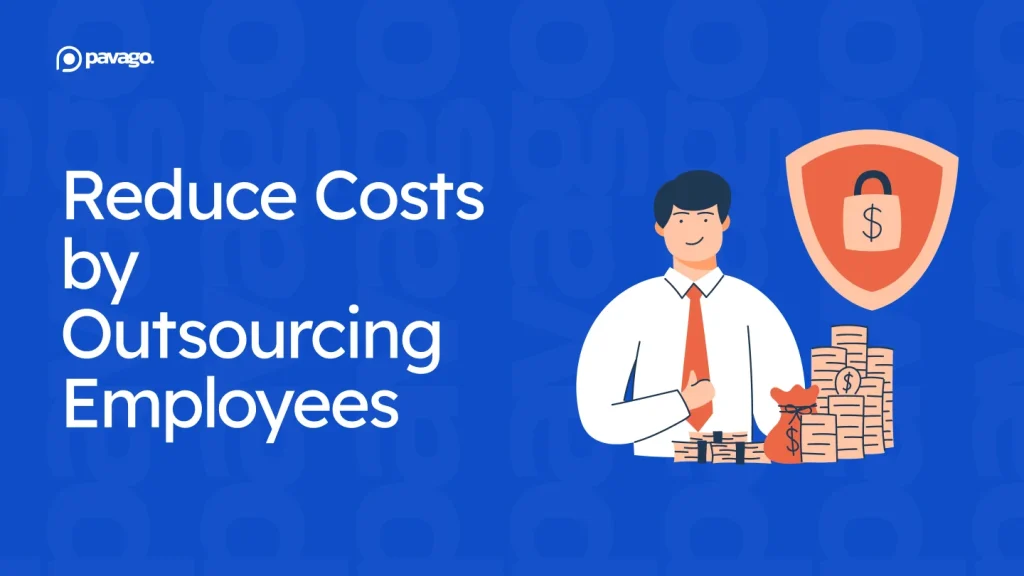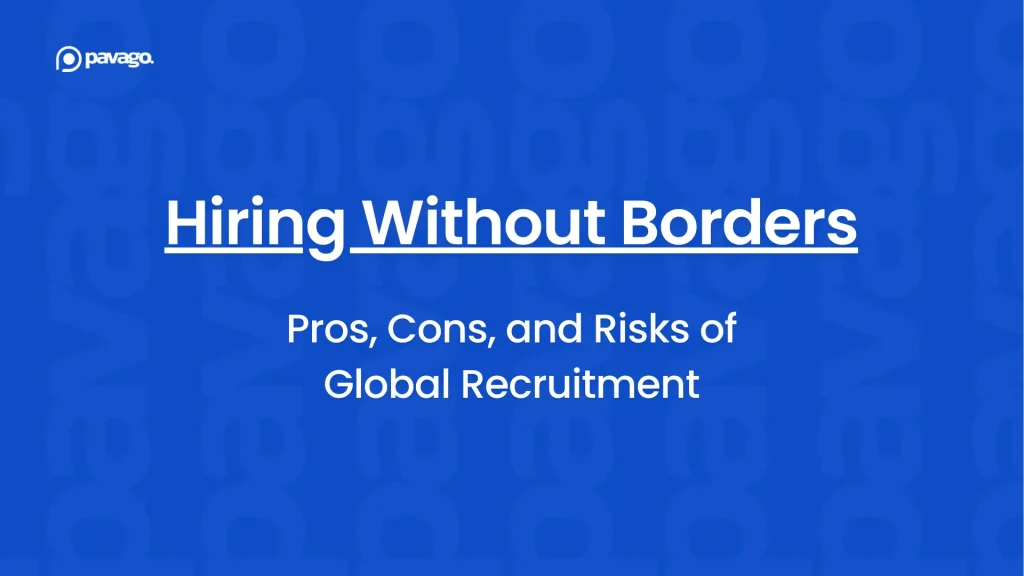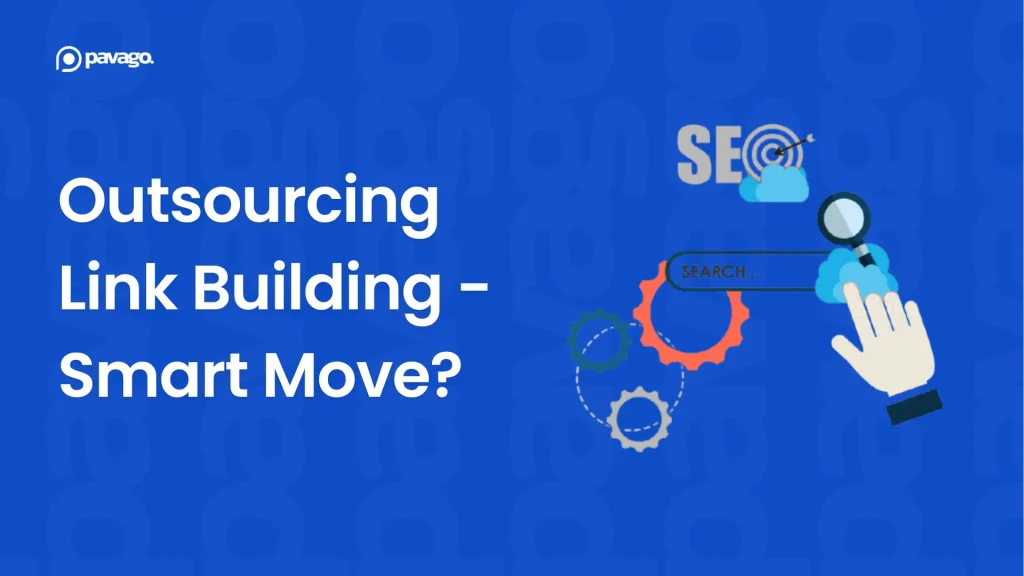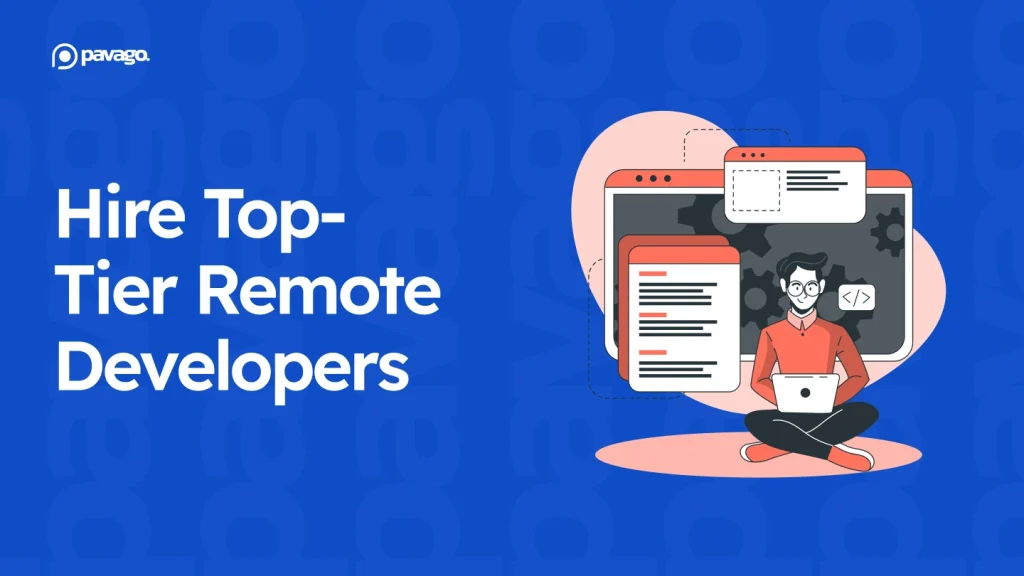Let’s face it: hiring full-time employees isn’t cheap.
Between job postings, recruitment agencies, interview time, and the mountain of benefits you have to offer, the costs really add up. And that’s before you even start paying salaries or setting up office space.
For many small businesses and startups, these costs can feel like a huge roadblock to growth.
But here’s the thing: it doesn’t have to be this way. You don’t need to stick to the traditional hiring model, especially if you’re looking to scale quickly and keep your budget intact.
You can achieve all that by outsourcing employees.
Instead of investing in the long and costly process of hiring full-time employees, you can tap into global talent and bring on outsourced employees who can help your business scale quickly, without breaking the bank.
And no, it’s not just about hiring cheaper labor – it’s about working smarter and bringing in top talent from all over the world.
So, if you’re tired of the high cost of hiring and want to know how outsourcing can help you grow faster and more efficiently, keep reading.

The Hidden Costs of Traditional Hiring
Before we dive into the benefits of outsourcing employees, it’s important to understand the real costs associated with traditional hiring.
While bringing full-time employees in-house may seem like a straightforward solution, the financial implications are often far-reaching.
First, there’s the recruitment process. Advertising positions, screening candidates, conducting interviews, and possibly paying for recruitment agencies all add up quickly. By the time you’ve selected a candidate, significant resources have been spent.
Once a candidate is hired, the costs continue to rise with salaries and benefits. Full-time employees come with expenses like healthcare, paid time off, retirement plans, and taxes. These ongoing costs can be a substantial part of a company’s budget.
In addition, there’s the training and onboarding process, which requires both time and money to get new hires up to speed with company procedures, systems, and culture. This step is essential but often overlooked when calculating the true cost of hiring.
Employee turnover is another hidden cost. Even with the best hiring practices, employees may leave, requiring you to invest additional time and resources into recruiting, hiring, and training new staff. This cycle can create an ongoing financial strain.
Beyond Cost Savings: How Outsourcing Employees Can Help Increase Operational Efficiency
Employee outsourcing isn’t just about saving money; it’s about solving key business challenges that traditional hiring can’t. Here’s how it works:
1. Speeding Up the Hiring Process
Traditional hiring takes time – ads, interviews, and negotiations. Outsourcing employees skips this process, giving you access to pre-vetted talent that is ready to start immediately. You can scale your team fast without waiting months.
2. Gaining Access to Specialized Talent
Outsourcing employees gives you access to specialized skills without the hassle of hiring locally. Whether you need a software developer, video content creator, or freelance sales rep, outsourcing allows you to find expert talent for specific roles without training costs.
3. Avoiding Overhead Costs
With outsourced employees, you skip costs like office space, equipment, and employee benefits. This reduces operational expenses and makes your business more cost-effective by only paying for the skills you need.
4. Flexibility and Scalability on Demand
Outsourcing allows you to scale quickly without long-term commitments. Need more help with a project? Add outsourced workers. If things slow down, you can easily scale back without the complexities of employee layoffs or severance.
5. Reducing Risk with Specialized Expertise
Hiring in-house can be risky if employees don’t meet expectations. With outsourced employees, you’re working with pre-vetted, experienced professionals, reducing the risk of poor performance and ensuring quality results.
Pavago helps you find global talent, providing access to pre-vetted professionals ready to help you scale quickly.
Ready to tap into the world’s top talent?
Outsourcing vs. Hiring In-House: A Quick Overview
| Factor | Outsourcing | In-House |
|---|---|---|
| Control Over Processes | Less control over daily activities, but clear guidelines and communication can mitigate this. | Full control over processes, team culture, and operations. |
| Cost and Flexibility | More flexible, pay only for what you need, no long-term commitments. | High fixed costs (salaries, benefits, office space) and long-term commitments. |
| Expertise and Specialization | Access to specialized talent immediately, with no long hiring process. | Requires significant time and money to hire, train, and retain specialized employees. |
| Speed and Scalability | Can scale quickly with access to a global talent pool. | Scaling takes time (recruitment, training, onboarding). |
| Employee Engagement and Retention | Outsourced employees may lack full connection to company culture, but agency partners can ensure alignment. | Strong engagement and long-term retention potential, but high turnover can be an issue. |
Real-World Examples of Companies Who Outsourced to Scale Faster

Outsourcing isn’t just a cost-saving strategy, it’s a growth driver for many successful companies. Here’s how some well-known businesses have used outsourcing employees to scale quickly, innovate, and stay competitive:
- Slack: In its early days, Slack outsourced software development to offshore teams, allowing the company to launch its product faster and stay ahead of competitors in a rapidly evolving market.
- Skype: Skype outsourced key development work to Eastern Europe, enabling them to scale faster and add innovative features that helped grow their user base.
- AppSumo: AppSumo, an online marketplace for startups, outsourced key marketing and development tasks to scale their platform rapidly, allowing them to expand their offerings without the high costs of hiring a large in-house team.
How to Get Started with Outsourcing Employees
Now that we’ve covered the benefits of outsourcing, let’s discuss how to get started with hiring outsourced workers effectively. Here’s a step-by-step guide to help you kick off your outsourcing journey:
1. Identify Roles to Outsource
Start by assessing which tasks or roles in your business can be outsourced without compromising quality.
Commonly outsourced roles include customer service, marketing automation consultants, and administrative tasks. Identify areas where your team needs extra help or specialized expertise, and consider outsourcing them to save time and resources.
2. Choose the Right Outsourcing Model
You have several options when it comes to outsourcing:
- Offshore: Outsourcing to countries with significant cost savings (e.g., India, Philippines, etc.).
- Nearshore: Outsourcing to nearby countries, typically with fewer time zone differences (e.g., Latin America, Eastern Europe).
- On-Demand: Hiring talent for specific projects without long-term commitments.
Evaluate your needs, budget, and timelines to choose the model that best suits your business goals.
3. Find a Reliable Outsourcing Partner
Once you’ve identified the roles to outsource and chosen the right model, it’s time to find a reliable outsourcing partner.
Look for offshore hiring agencies or platforms that offer pre-vetted candidates, have experience in your industry, and provide support throughout the hiring process. Ensure they are transparent about costs, clearly outline expectations, and have a track record of successful placements.
Looking for a trusted partner to help you find the right outsourced talent? At Pavago, we connect you with top-tier professionals who are ready to hit the ground running.
Streamline your hiring process with our expert support and scale your team quickly and efficiently.
4. Set Clear Expectations and KPIs
For your outsourced team to be successful, clear communication is key.
Set clear goals and KPIs for each project or task, ensuring your outsourced employees understand your expectations from the start. Establish regular check-ins, and use project management tools to maintain visibility and keep everyone aligned.
5. Onboard and Integrate Your Team
While outsourcing employees means they aren’t physically in your office, it’s still important to integrate them into your workflow. Onboard them with the same care and attention you’d give to an in-house hire. Use collaboration tools, and ensure they understand your company culture, communication practices, and team dynamics.
A smooth onboarding process will make them feel like an integral part of your team, helping them deliver better results.

Parting Thoughts
Outsourcing employees isn’t just about cutting costs; it’s about scaling your business smarter.
Whether you need to bring in specialized talent, grow your team quickly, or save on operational costs, outsourcing helps you do all that without the headaches of traditional hiring.
Once you understand how outsourcing works and overcome the typical challenges, you can tap into global talent, get work done faster, and keep your business moving forward.
In the end, outsourcing allows you to focus on growing your business, while leaving the rest to experts who can help you scale efficiently.
If you’re ready to grow without the extra burden, outsourcing employees might just be the solution you’ve been looking for.
Ready to scale your business with top-tier outsourced talent? Let Pavago connect you with pre-vetted professionals who are ready to help you grow quickly and efficiently.
















